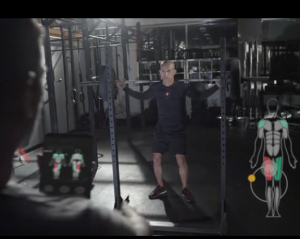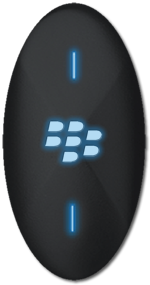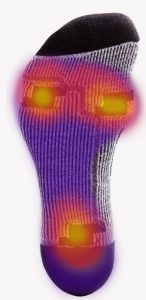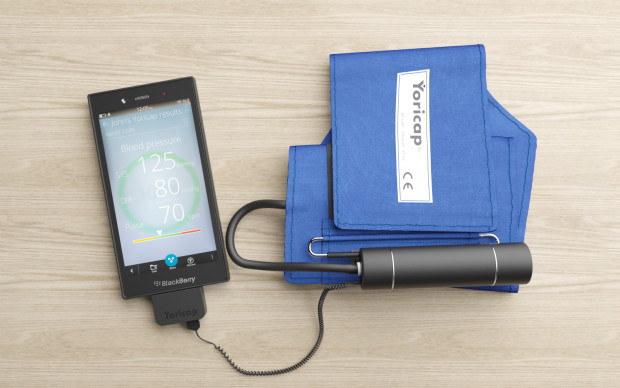In my previous articles on smart wearables, I focused on smart watches and smart bands. I also mentioned the DIY aspect of wearables available with Adafruit. To expand on the functional wearable, I am now going to move on to smart fabric wearables. This new segment takes body monitoring to the next level beyond the smart band.
When I bought my Nintendo Wii, it came with the sales pitch of getting people off of the couch to play games with friends. Nintendo didn’t just stop at making games that made you jump around and fling your arms, they also create a fitness program called Wii Fit. With the addition of the Wii Balance Board, Wii Fit attempted to monitor your workout to make sure that you properly did each exercise in order to get the best workout. There are all sorts of stories about people losing weight using Wii Fit. I will admit, that when I was doing Wii Fit, I found it fun and challenging and did manage to get a halfway decent workout. However, I probably burned more calories playing Rayman Rabbids (You really just have to let yourself go and get into it). When I started doing free weights as part of my exercise routine, I had to work extra hard to make sure that I did the correct movements and not just swing a weight up and completely neglect a muscle group. One of my nitpicks about the Wii Fit and other Wii exercise games and a similar issue with smart bands, is that if you only have one Wiimote or one smartband, how do you track movements on the other arm or legs or general body movement? To me, it seemed more like a bit of guessing, which is why you get toddler playing Wii Bowling.
 What is needed is an outfit that can track movements and whether or not the muscles are being utilized all over the body. It would have to be form fitting and comfortable, kind of like having Under Armour with brains. [ Under Armour has shown concepts for smart workout wear and even have a site for connected wear, but they aren’t selling any smart Under Armour, yet. ] It would also have to be washable and the “brains” swappable, so that you could choose the outfit that you want to wear, but not have to reconnect a new “brain” each time you changed the outfit.
What is needed is an outfit that can track movements and whether or not the muscles are being utilized all over the body. It would have to be form fitting and comfortable, kind of like having Under Armour with brains. [ Under Armour has shown concepts for smart workout wear and even have a site for connected wear, but they aren’t selling any smart Under Armour, yet. ] It would also have to be washable and the “brains” swappable, so that you could choose the outfit that you want to wear, but not have to reconnect a new “brain” each time you changed the outfit.
There are two companies that do have or are soon to have smart shirt, shorts and slacks available. It was a toss-up for me to decide between Hexoskin and Athos, it came down to one thing. Both are basically the same concept, a wired outfit that connects to a “brain” that transmits the data to your smart phone or tablet. Hexoskin has some advantages, one being that it is already available and another being that they plan on opening their API up for others to access the data. This is a big plus and one of my ongoing rants.
Hexoskin also provides “team” or multi-user connection to a “super user” or coach. There isn’t any information on Athos site, beyond pairing 2 devices to the same phone, so I don’t know if it will work, but, in theory, it should also work. Having the ability to monitor an entire team of people wearing smart “uniforms” is something I envisioned back when I first got my BlackBerry PlayBook. Kudos to Hexoskin, but your recording device just looks a little bit tacked on. And more kudos that your recording device has a USB download option. I choose the Athos as the main example, just because of the idea of how the “brain” connects to the outfit and it looks great mocked up with a BlackBerry logo.
 The “Core” is shaped like a large pill and, according to their brochure website, can be placed in “pockets” either on the chest, sleeve or rump. I am guessing that how the outfits are made, the core could probably be attached in pockets in other locations as well. It will probably take some more real world testing to find out what people prefer. I think I would want to make sure I don’t either sit on the “Core” or it doesn’t get squished under a barbell or part of a weight lifting machine. The key here, is being able to remove the core and put it into another outfit and having it comfortably record data and send it to your smart device. I think the core might still be a little too bulky, but I would have to see one in person.
The “Core” is shaped like a large pill and, according to their brochure website, can be placed in “pockets” either on the chest, sleeve or rump. I am guessing that how the outfits are made, the core could probably be attached in pockets in other locations as well. It will probably take some more real world testing to find out what people prefer. I think I would want to make sure I don’t either sit on the “Core” or it doesn’t get squished under a barbell or part of a weight lifting machine. The key here, is being able to remove the core and put it into another outfit and having it comfortably record data and send it to your smart device. I think the core might still be a little too bulky, but I would have to see one in person.
While Hexoskin only provides tops and Athos provides tops and bottoms, I think both could benefit with the added information provided from Sensoria smart socks. Sensoria claims that their smart socks will help you determine if you are running properly. 
The main issue I have with the Sensoria smart socks is that you have to wear an anklet on each ankle to help record your running. While that goes well with my removable “brains” idea, it would be nice if it didn’t seem like you were putting on shackles to go running. Adding a smart band and a smart watch and you are an electrified fugitive. But, I can understand that they don’t want the “brain” to fall off or drag the sock down. Maybe if there was a way to attach it to the shoe or make it two parts, with a small light-weight piece on the sock and the actual brains elsewhere, but close. Of course, if you had smart pants, then maybe there could be an extension to clip into the socks and have the pant “brains” record the sock data as well. Bonus points for Sensoria for making their smart socks machine washable.
Where does BlackBerry fit in here? As I mentioned in the earlier articles, BlackBerry needs to be more than just the network or secure software of Internet of Things. They need to also be in the hardware of IoT, especially in wearable IoT. Having the logo on things, whether branded or as part of an acquisition, puts that reminder into people’s head that you are still around and that the company is a leader in technology. With wearables being such a new market, anything that stands out will draw attention and help with business. Seeing someone do a workout at the gym and having the glowing BlackBerry logo pulsate as it sends data to their smart phone, would definitely get some interest. I wouldn’t be against BlackBerry setting up trainers with a monitoring system across a few gym chains like LifeTime Fitness or Gold’s Gym. Maybe have someone as the BlackBerry Ambassador to Fitness personally pick the trainers who have a good look and large attendance. BlackBerry could setup their phone to display on a large screen while they do the workout. I know that if I was in that class and I saw the trainer’s muscles being monitored (Athos even does a scoring), I would be wondering how I compared. They could go to professional sports teams and set them up in “team mode” to let the coaches see who is working at full potential during practice. Or to see who needs a break or water in order to prevent heat stroke or muscle damage.
But, BlackBerry is “enterprise”, what about the enterprise? Well, BlackBerry is also defense, one of the biggest enterprises. The team mode for monitoring football players can also be used to monitor soldiers, either by the leader with the patrol or the commander back at HQ. The Athos, besides using Electromyography or EMG to monitor muscle, it also monitors heart rate and breathing. Put those measurements together and you can determine the stress of the soldier. You can also help medics prepare for treatment of the soldier. Which rolls into health care, the current main focus of BlackBerry‘s growth.
 Beyond their connections with Nanthealth and their HBox for Health IoT as well as new upstarts like Yoricap, wearables can help from everyday monitoring to monitoring during surgeries to monitoring during recovery and rehabilitation. And just like how Yoricap is aimed at self monitoring, everyday executives could use smart underwear to monitor their own health at all times and send out alerts when a medical emergency happens. It could be a status symbol to have your under garments smarted than the other CEO’s under garments. It might be a good way to make sure the VP’s are all telling the truth as well, once you have muscle tension and body temperature being fed back to the top dog. Once it gets beyond the board room and well accepted, smart uniforms for all sorts of physically challenging careers could be made to monitor the well-being and safety of employees.
Beyond their connections with Nanthealth and their HBox for Health IoT as well as new upstarts like Yoricap, wearables can help from everyday monitoring to monitoring during surgeries to monitoring during recovery and rehabilitation. And just like how Yoricap is aimed at self monitoring, everyday executives could use smart underwear to monitor their own health at all times and send out alerts when a medical emergency happens. It could be a status symbol to have your under garments smarted than the other CEO’s under garments. It might be a good way to make sure the VP’s are all telling the truth as well, once you have muscle tension and body temperature being fed back to the top dog. Once it gets beyond the board room and well accepted, smart uniforms for all sorts of physically challenging careers could be made to monitor the well-being and safety of employees.
And if BlackBerry was on the ground floor with the Athos core, their cores could be everywhere in the workforce providing secure data for monitoring.
About DeanLogic
Dean has been playing around with programming ever since his family got an IBM PC back in the early 80's. Things have changed since BASICA and Dean has dabbled in HTML, JavaScript, Action Script, Flex, Flash, PHP, C#, C++, J2ME and SQL. On this site Dean likes to share his adventures in coding. And since programming isn't enough of a time killer, Dean has also picked up the hobby of short film creation.

